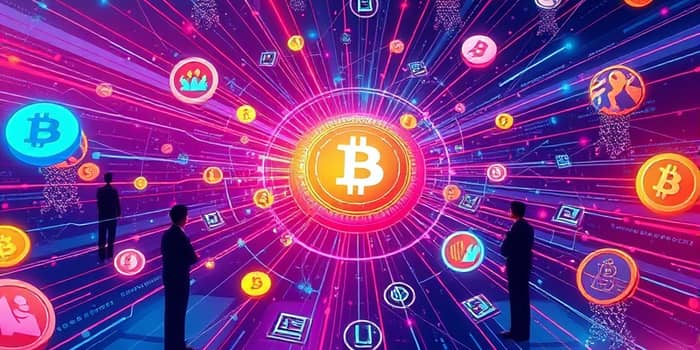Decentralized finance (DeFi) has opened a world of opportunities for investors, traders, and enthusiasts alike. Yet, as protocols multiply across chains and platforms, navigating this vast landscape can feel overwhelming. Enter DeFi aggregators: the powerful tools that unify fragmented services into a single, seamless interface. Whether you’re a newcomer or a seasoned professional, these platforms deliver optimized trading and yield discovery while slashing complexity and cost.
In this article, we explore the transformative potential of DeFi aggregators, uncover their inner workings, highlight key benefits, and guide you through real-world use cases. We’ll also address risk mitigation and peek ahead at future innovations shaping the DeFi ecosystem.
Understanding DeFi Aggregators
At their core, DeFi aggregators are platforms designed to simplify users’ access to DeFi by consolidating multiple protocols under one roof. Rather than hopping between decentralized exchanges (DEXs), lending services, and staking pools, users can access a broad spectrum of services—token swaps, lending, yield farming, cross-chain bridges—through a unified dashboard.
Specialized DEX aggregators excel at sourcing optimal trading routes across numerous liquidity pools. Advanced protocols further leverage AI-driven algorithms to automatically select the best paths for swaps and asset allocations, ensuring minimal slippage and the lowest gas fees.
Core Functions That Power Aggregators
Most DeFi aggregators offer a suite of essential tools, including:
- Liquidity aggregation from dozens of DEXs and lending platforms
- Automated route selection using on-chain smart contracts
- Cross-chain interoperability for seamless asset transfers
- Yield optimization through real-time analytics
By packaging these capabilities into a single interface, aggregators dramatically reduce manual effort and potential user error. This streamlined approach appeals to both retail participants seeking convenience and institutional traders demanding efficiency.
How DeFi Aggregators Work
Under the hood, these platforms rely on robust smart contracts that interact with various DeFi protocols. When a user initiates a swap or deposit, the aggregator’s engine rapidly scans multiple sources for the best price, routing the transaction across different chains or pools as needed.
AI and machine learning components are increasingly integrated to refine these decisions. Such intelligence can consider gas costs, slippage, pool depths, and network congestion, adjusting strategies in real time for maximum cost savings and returns.
Throughout the process, users retain full custody of their assets; funds are never held by the aggregator. All executions occur on-chain, preserving transparency and enabling independent auditing.
Key Benefits for Users
DeFi aggregators deliver a host of advantages, empowering users to:
- Access competitive trading rates instantly by comparing offers across platforms
- Lower transaction fees through bundled trades and optimized routing
- Explore multi-chain opportunities without juggling multiple wallets
- Track portfolios in real time with integrated analytics
- Minimize manual approvals and transaction failures during onboarding
These benefits translate into reduced friction and higher profitability for every level of DeFi participant, from casual investors to high-volume institutions.
Market Landscape Snapshot
As the DeFi ecosystem expands, aggregators continually adapt to support new chains and products. Below is a snapshot of major DeFi categories by market share (mid-2023 data):
Aggregators are increasingly pivotal, acting as “one-stop shopping malls” for DeFi and tapping into diverse liquidity sources that span Ethereum, Binance Smart Chain, Polygon, Solana, Avalanche, and beyond.
Use Cases Across User Segments
DeFi aggregators cater to distinct audiences, each with unique needs:
Retail Users: Quick swaps, comparative yield farming, and easy multi-chain portfolio oversight.
Institutional Traders: Large-order execution with minimal slippage, strategic order splitting, and deep liquidity sourcing.
Developers: API integrations to embed aggregated liquidity, swap functionalities, and yield engines into custom DeFi applications.
Whether you’re automating complex strategies or simply trading tokens, these platforms offer tailored workflows that adapt to diverse objectives.
Managing Risks and Considerations
While aggregators mitigate some risks—such as reliance on a single DEX—users still face potential vulnerabilities. Smart contract bugs, protocol exploits, and cross-chain bridge attacks remain concerns.
To safeguard assets, it’s crucial to:
- Choose aggregators with rigorous third-party audits
- Review community feedback and governance transparency
- Avoid over-concentration in a single protocol or chain
- Stay informed about emerging security advisories
By adopting these best practices, users can enjoy the benefits of aggregation while keeping risk exposure in check.
Looking Ahead: Innovations and Trends
The next wave of DeFi aggregators promises even greater sophistication. Emerging trends include:
AI-Powered Recommendations: Personalized trade and yield suggestions based on individual user history and market conditions.
Real-World Asset Integration: Tokenization of bonds, real estate, and other traditional assets for DeFi exposure.
Advanced Cross-Chain Orchestration: Seamless asset movement across layer-1 and layer-2 networks with minimal latency.
By 2025, we expect aggregators to become the central hubs of a fully interoperable financial ecosystem, where users tap into both on-chain and off-chain opportunities through one unified platform.
Conclusion: As DeFi continues its rapid evolution, aggregators stand out as transformative enablers that break down complexity and unlock new efficiencies. Whether you aim to optimize trades, streamline asset management, or explore cutting-edge financial products, these platforms put the power of DeFi at your fingertips.
Embrace the future of finance today—discover how DeFi aggregators can simplify your journey, amplify your returns, and connect you to a world of decentralized possibilities.
References
- https://www.debutinfotech.com/blog/best-defi-aggregators
- https://symbiosis.finance/blog/what-is-a-dex-aggregator-best-options-in-2025-explained
- https://osl.com/academy/article/what-is-a-defi-aggregator
- https://sdlccorp.com/post/top-5-decentralized-financedefi-trends-to-watch-in-2025/
- https://www.perfectiongeeks.com/defi-dex-aggregator-platforms
- https://www.coingecko.com/research/publications/defi-categories-market-share
- https://www.ccn.com/education/crypto/defi-aggregator-decentralized-finance-tools/
- https://rango.exchange/learn/decentralized-finance/DEX-aggregators-DeFi-Decentralized










